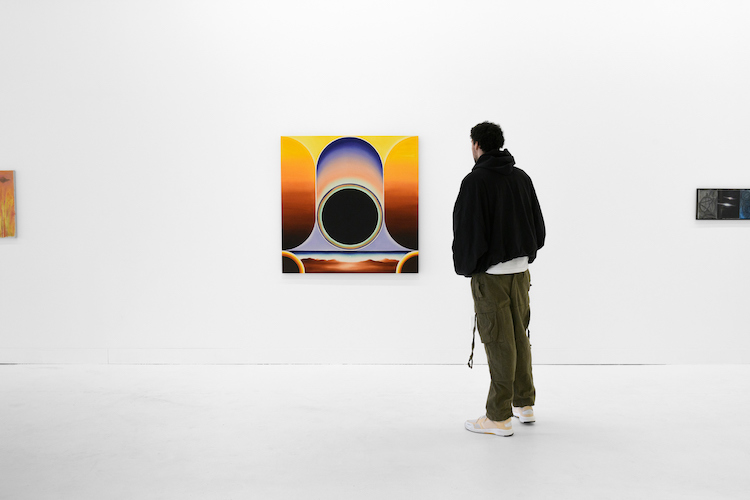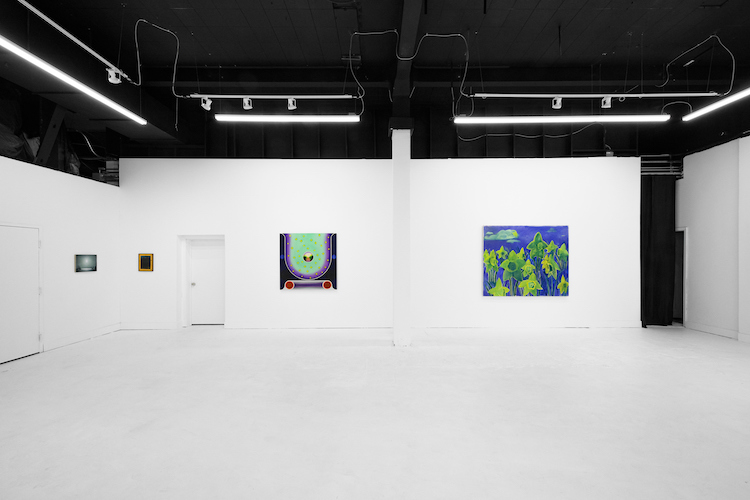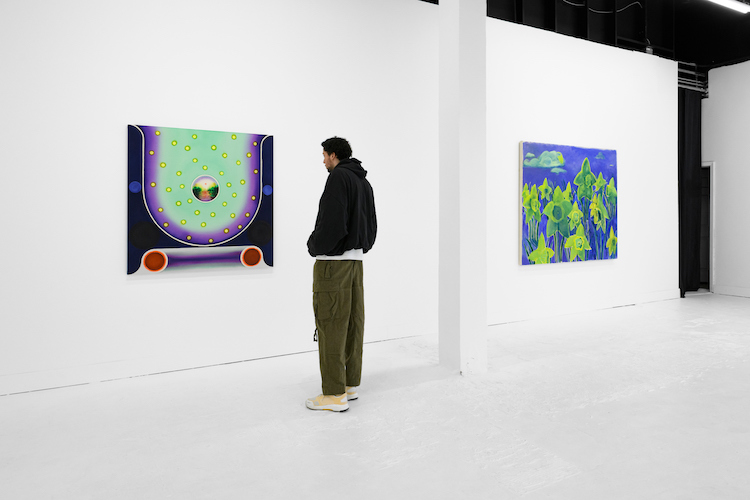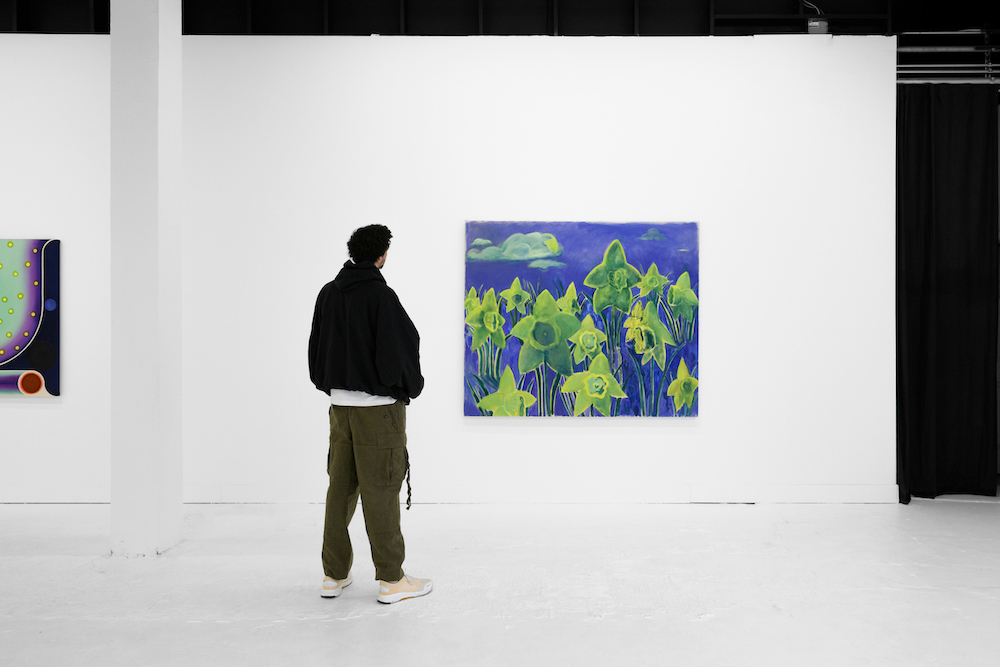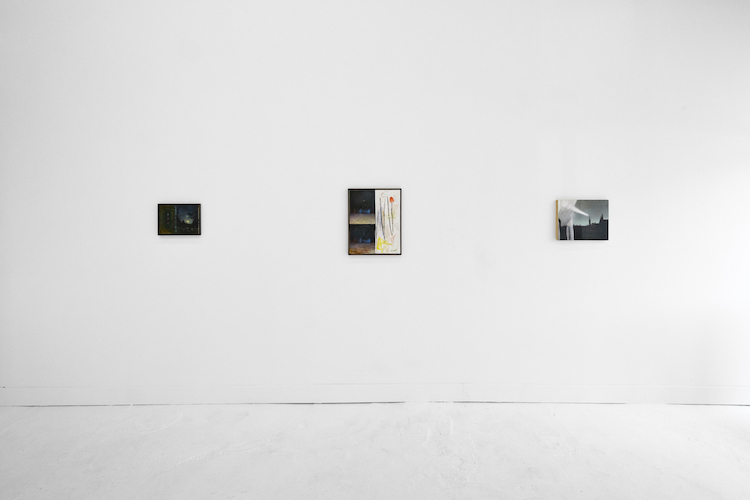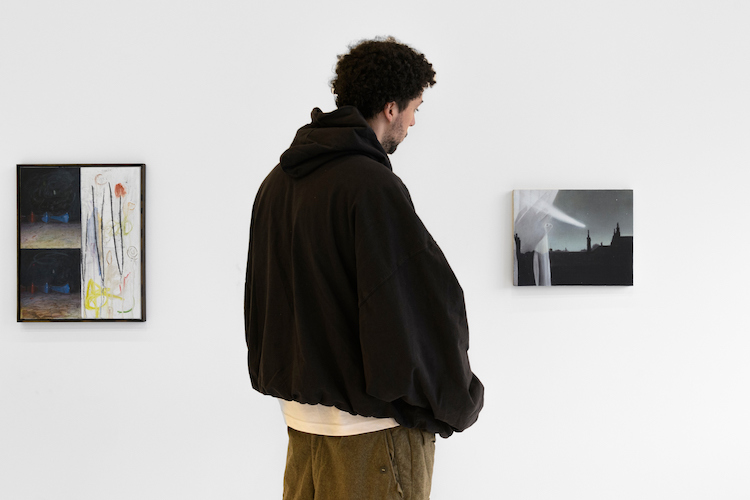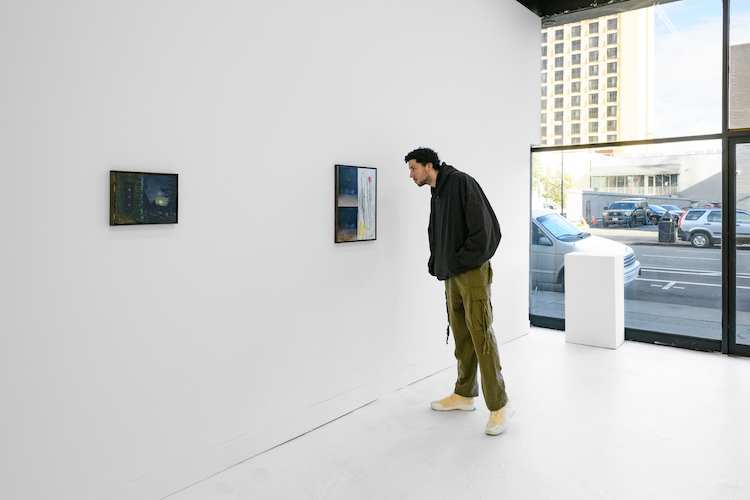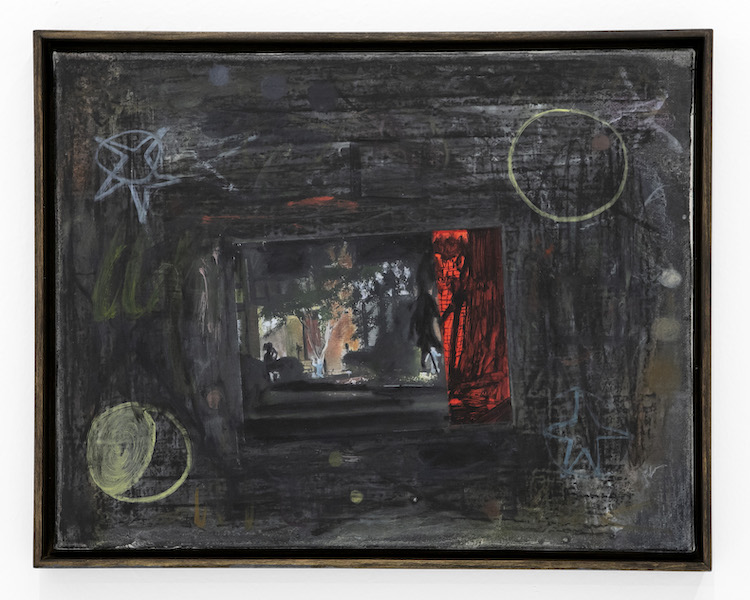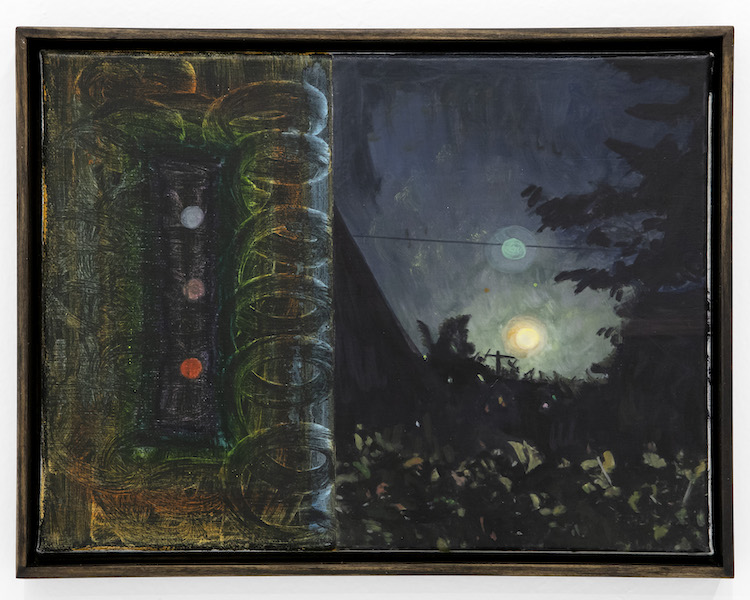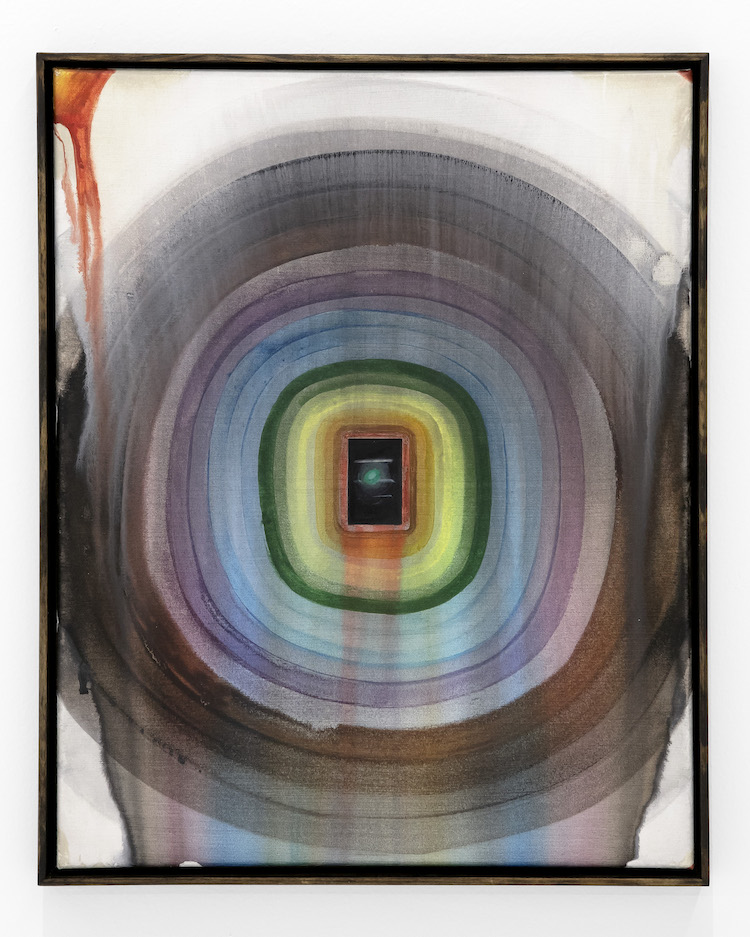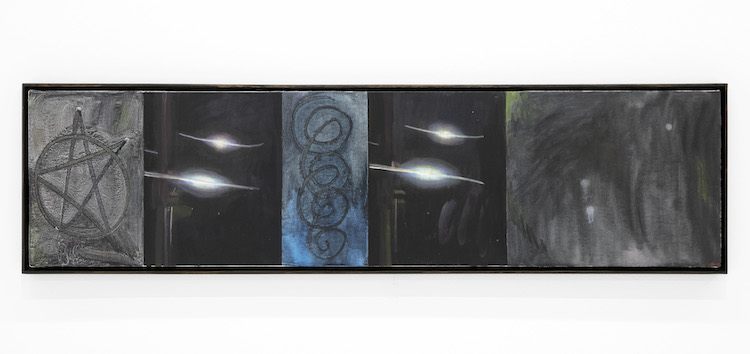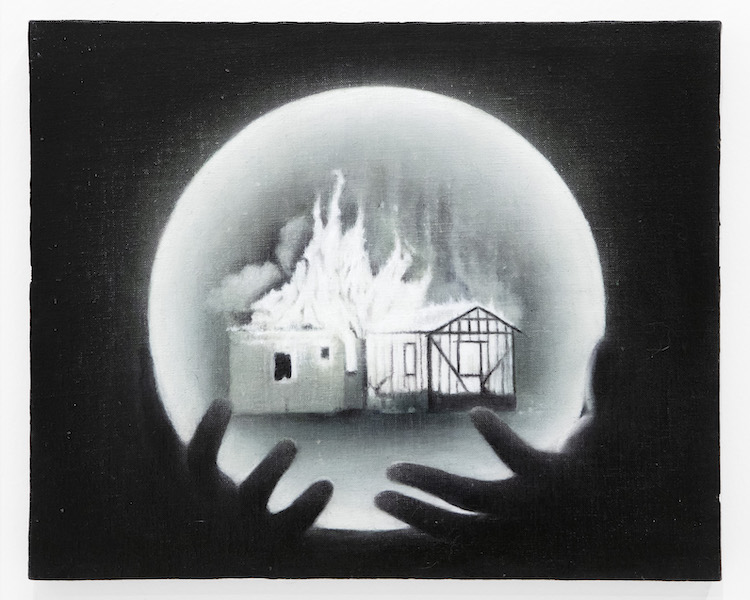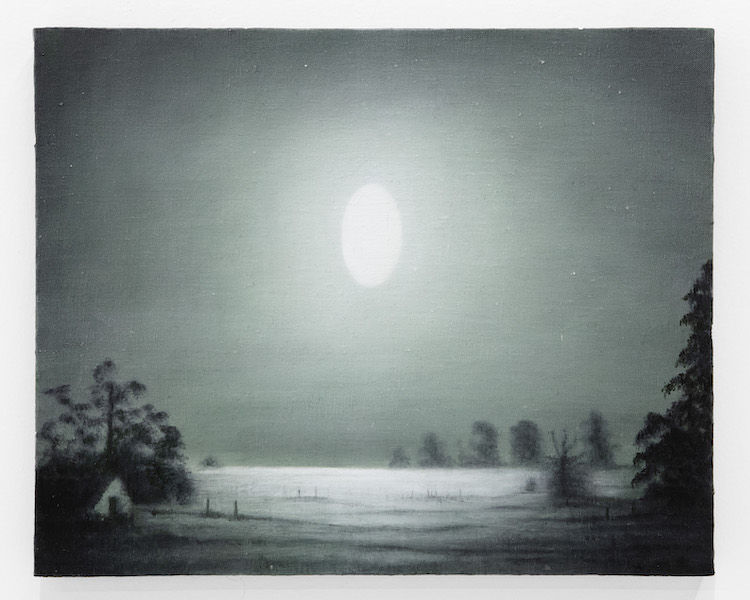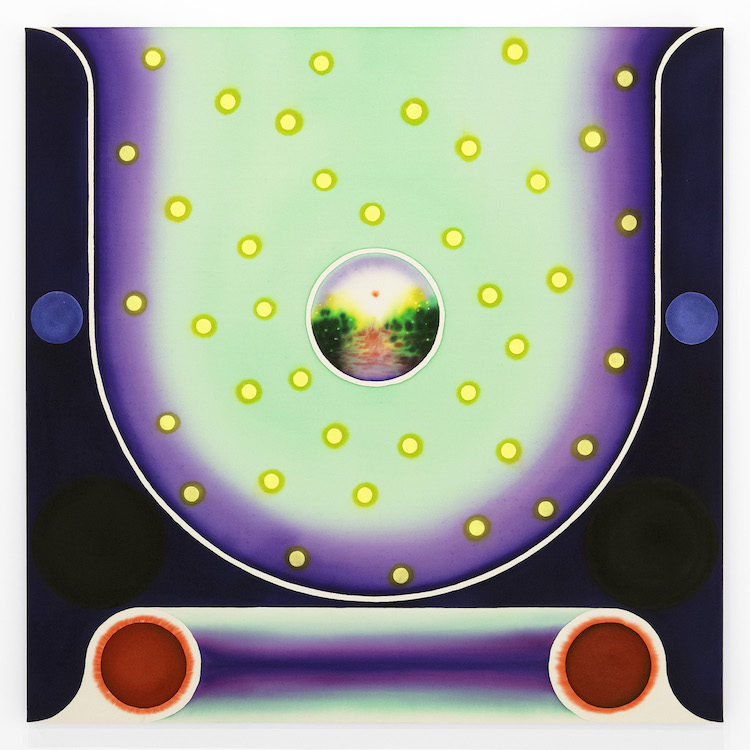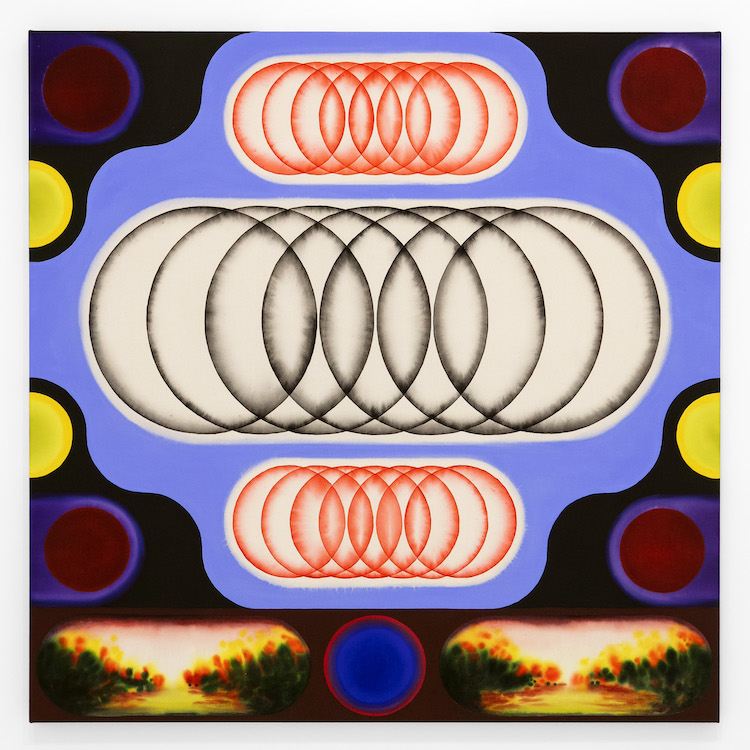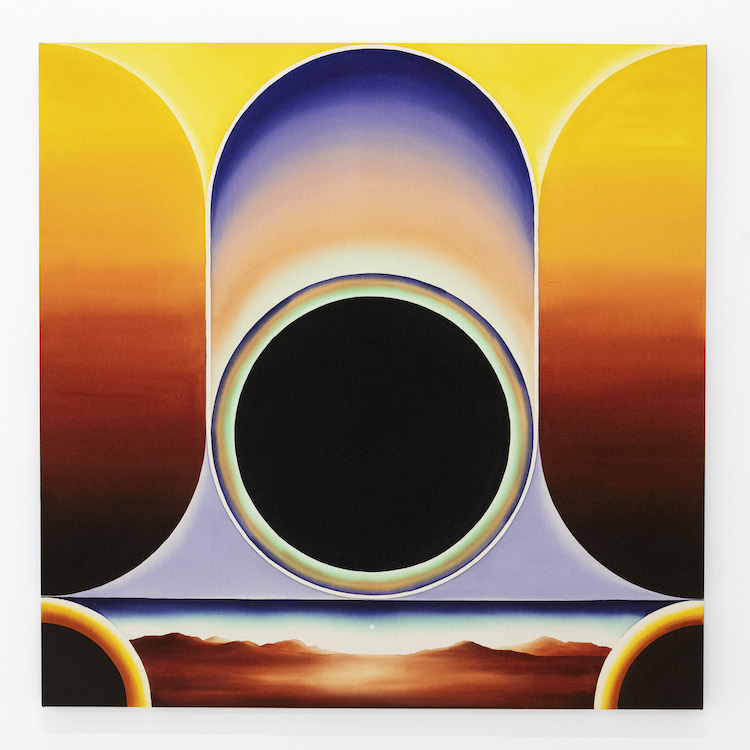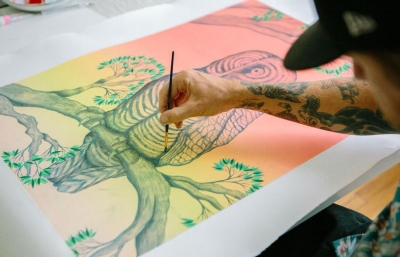pt.2 Gallery is pleased to present a group show featuring artists Ben Quinn, Fiona Finnegan, Michael Childress, and Sarah Thibault. Each of these artists creates work with a sense of something reverberating below the surface, be it spirituality, subconscious, or supernatural. Each piece has an echo. Playing with light as a central theme, Finnegan and Quinn’s night paintings, Thibault’s work at dusk and dawn, and Childress’ rendering of visual processing all play with what is seen, what is hidden, and what is believed.
Ben Quinn creates a series of night paintings with watercolor, vine charcoal, PVA, and inkjet mounted to canvas. Quinn’s dark, shadowy palette expertly contrasts with the levity of his Twombly-esque markmaking. He juxtaposes realism and rudimentary pictographs as his naive style drawings of stars, moons, and celestial objects appear throughout the work in split-screen presence with the printed image. In Fully, the moonlight is reflected in the lighted orbs on the left; foliage is mimicked by swirls around the border. Quinn’s subject matter is eerie — bodiless, floating eyes populating the darkness, and canoes emerging from an abyss as the horizon line of the sea disappears from view. He infuses an air of mystery and almost child-like fear into each composition, haunting but harkening back to innocence.
Fiona Finnegan is a Belfast-based artist, and the long, cool winters of her home influence the muted blues and grays that coat her canvases. Finnegan’s new paintings have an almost tactile quality of magic in their supernatural reference: the crystal ball foretells a grim future; the oval moon and shooting stars are like UFOs in the night sky. The witness of each work is a whispered secret, something that perhaps you shouldn’t see, but it is cosmologically destined for you to happen upon it. In each work, something is amiss, but the tone is calm and peaceful. In Crystal Gazing, the Burning House, the viewer is removed from the house in embers as someone grips the crystal ball and presents it matter-of-factly to you. Instead of feeling horror, you feel strangely at ease. In Oval Moon #1, the snowy nighttime landscape has a meditative quality, and the oval moon floating above it, while otherworldly, feels like home.
Michael Childress’ paintings are reminiscent of particle maps of sound waves, diagrams of the human eye, and the spectrum of light and color. Each piece is a visualization of its own perception, showing the scientific rendering alongside the image itself. In this way, he bridges the gap of creation while creating a wholly unique entity in the process. In Consciousness Amid Blooms, there is a juxtaposition of diagramming with the perceived scenery. He renders the ‘blooms’ in primary color, the most essential aspects of light and hue, in this allusion not just to the neurology of the senses but to consciousness itself. Childress explicitly names light as the catalyst for vision and reduces everything to color spectra to point to this phenomenon. The result of these compressions and rarefactions is a stunning harmony of motion, color, and optical illusion.
Sarah Thibault paints scenes of daffodils in limited color palettes. The paintings have a pulsating nature to them, echoing from the vibrations of the blurred application of paint. They bask in the cool light of dusk and the warm light of the new dawn, in the liminality between night and day. The titles of the work hint at the artist’s experience as a medium — Communications at Night or Staring into the Face of the Future are signals of transmission below the surface. The flowers in each piece look as though they are calling out, with the cups at their centers like open mouths. As such, we find animism in the flora of Thibault’s work; a message coming from an unexpected source, the earth broadcasting through the vessel of the flower.



